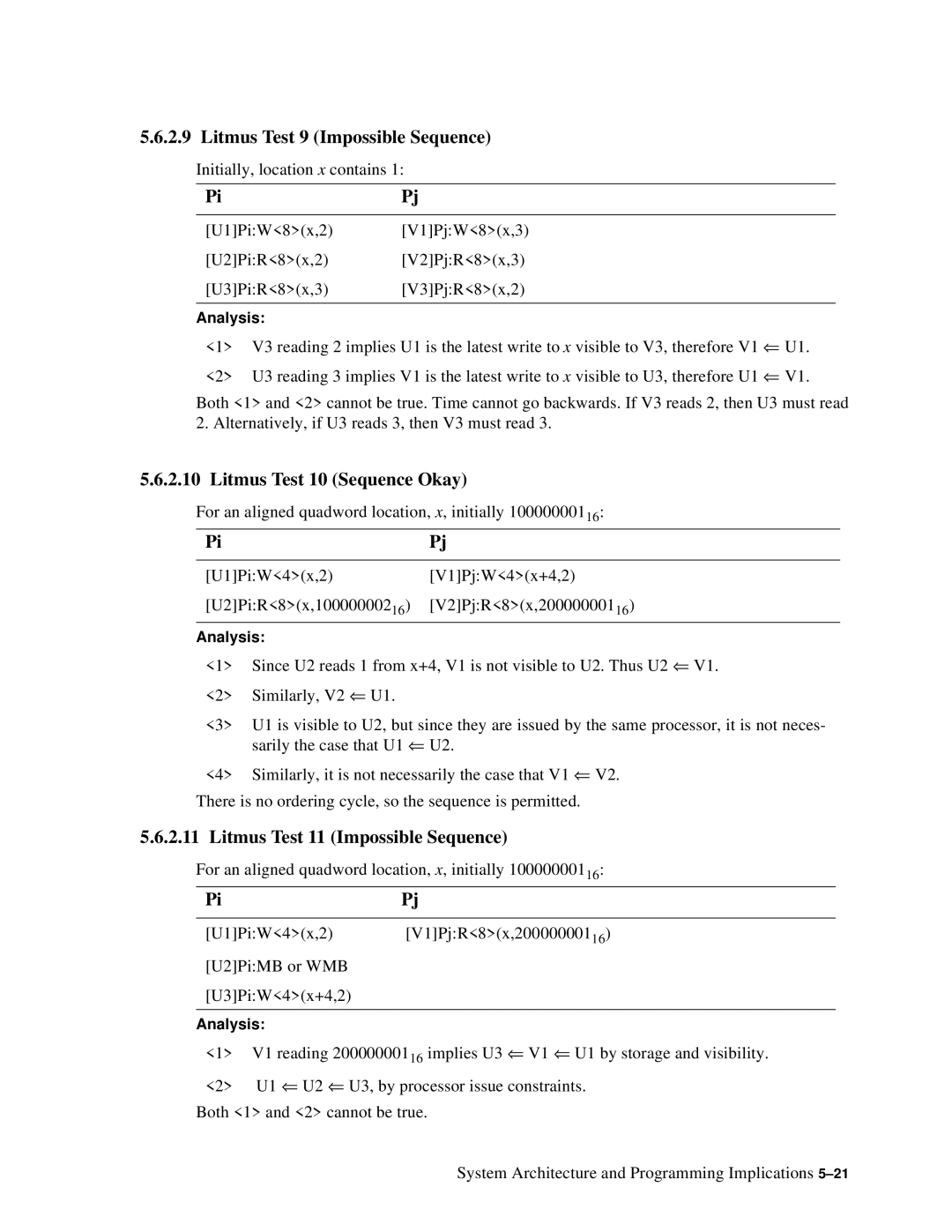
5.6.2.9 Litmus Test 9 (Impossible Sequence)
Initially, location x contains 1:
Pi | Pj |
|
|
[U1]Pi:W<8>(x,2) | [V1]Pj:W<8>(x,3) |
[U2]Pi:R<8>(x,2) | [V2]Pj:R<8>(x,3) |
[U3]Pi:R<8>(x,3) | [V3]Pj:R<8>(x,2) |
|
|
Analysis:
<1> | V3 reading 2 implies U1 is the latest write to x visible to V3, therefore V1 ⇐ U1. |
<2> | U3 reading 3 implies V1 is the latest write to x visible to U3, therefore U1 ⇐ V1. |
Both <1> and <2> cannot be true. Time cannot go backwards. If V3 reads 2, then U3 must read
2.Alternatively, if U3 reads 3, then V3 must read 3.
5.6.2.10Litmus Test 10 (Sequence Okay)
For an aligned quadword location, x, initially 10000000116:
Pi |
| Pj |
|
| |
[U1]Pi:W<4>(x,2) | [V1]Pj:W<4>(x+4,2) | |
[U2]Pi:R<8>(x,10000000216) [V2]Pj:R<8>(x,20000000116) | ||
|
| |
Analysis: |
| |
<1> | Since U2 reads 1 from x+4, V1 is not visible to U2. Thus U2 ⇐ V1. | |
<2> | Similarly, V2 ⇐ U1. |
|
<3> | U1 is visible to U2, but since they are issued by the same processor, it is not neces- | |
| sarily the case that U1 ⇐ U2. | |
<4> | Similarly, it is not necessarily the case that V1 ⇐ V2. | |
There is no ordering cycle, so the sequence is permitted.
5.6.2.11 Litmus Test 11 (Impossible Sequence)
For an aligned quadword location, x, initially 10000000116:
Pi | Pj |
[U1]Pi:W<4>(x,2)[V1]Pj:R<8>(x,20000000116)
[U2]Pi:MB or WMB
[U3]Pi:W<4>(x+4,2)
Analysis:
<1> | V1 reading 20000000116 implies U3 ⇐ V1 ⇐ U1 by storage and visibility. |
<2> | U1 ⇐ U2 ⇐ U3, by processor issue constraints. |
Both <1> and <2> cannot be true.
System Architecture and Programming Implications
